Congressmen & Reporters visit Buchenwald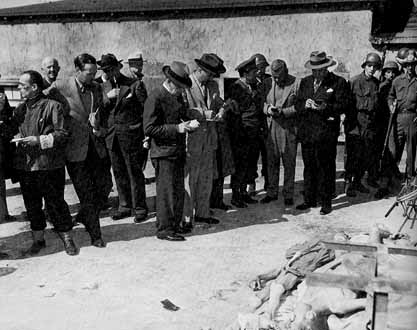 After the liberation of Buchenwald on April 11, 1945, the rotting corpses were left unburied until General Dwight D. Eisenhower could arrange for a contingent of American congressmen and a group of newsmen, led by Joseph Pulitzer of the St. Louis Post Dispatch, to fly to Germany to view the camp on April 24, 1945. By then, the original naked corpses had been left out in the sun and the rain for almost two weeks. The shortage of food and the typhus epidemic in the camp had resulted in so many deaths before the liberation of the camp that the crematorium ovens could not keep up with disposing of the bodies. Since the liberation, the epidemic had not abated and more sick prisoners were dying each day, although some were dying from eating too much of the rich food given to them by the Americans. Their bodies were added to the pile, so that by the time that the Congressmen and the newsmen got there, there were many more corpses. 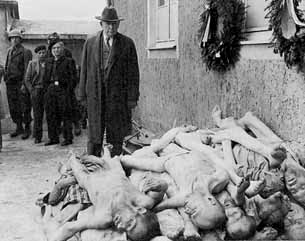 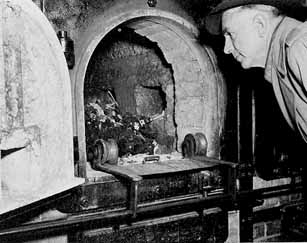 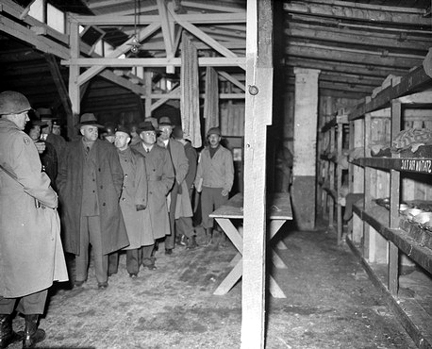  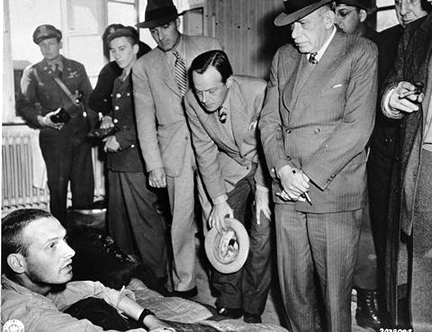 The newspaper reporters in the photo above are, from left to right: Norman Chandler of the L.A. Times, William I. Nichols of This Week Magazine and Julius Ochs Adler of the New York Times. They are interviewing a survivor who is in the hospital at Buchenwald. In his book, "Ike the Soldier: As They Knew Him," Merle Miller quotes Eisenhower's speech on April 25, 1945 to members of Congress and Journalists who had been shown Buchenwald on the day before: You saw only one camp yesterday. There are many others. Your responsibilities, I believe, extend into a great field, and informing the people at home of things like these atrocities is one of them....Nothing is covered up. We have nothing to conceal. The barbarous treatment these people received in the German concentration camps is almost unbelievable. I want you to see for yourself and be spokesmen for the United States. If Ike ever visited Buchenwald himself, he neglected to mention it in his own book, "Crusade in Europe." The only "horror camp" in Germany that he mentioned in his book was Ohrdruf, a sub-camp of Buchenwald which he visited on April 12, 1945. Edward R. Murrow ReportLiberation ClaimsLiberation DayFirst American liberatorsGerman civilians tour BuchenwaldExhibits put up by prisonersMore exhibits at BuchenwaldBuchenwald OrphansOld photos of BuchenwaldBuchenwald SurvivorsBack to Buchenwald liberationHomeThis page was last updated on April 14, 2008 |